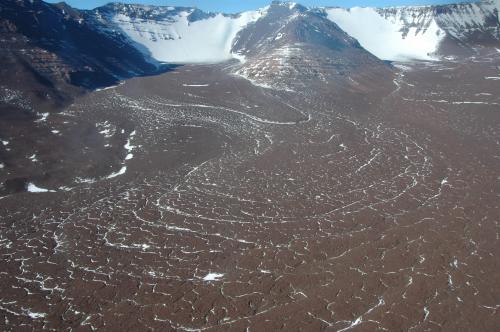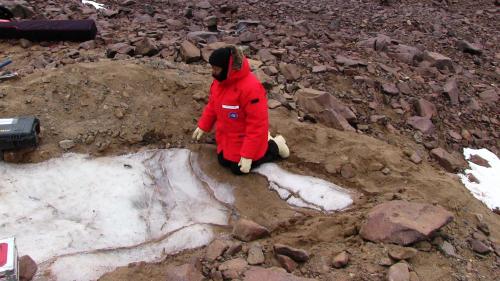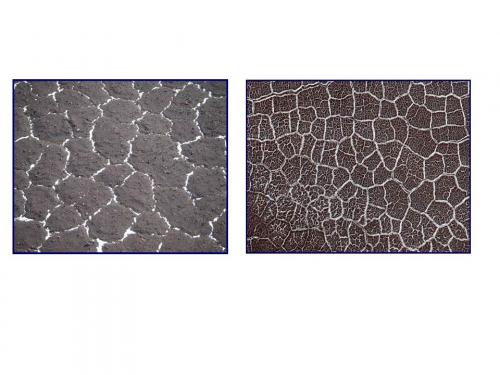There are similarities in the type and range of glacial features observed in the Antarctic Dry Valleys and on Mars. This journal focuses on the similarities between glacial landscapes on Earth and Mars. Watch my video introduction below and I will present some photographs of glacial features that are present in Central Beacon Valley and on Mars.
http://youtu.be/nCgZAWYCrPE
Debris-covered Glaciers and Viscous Flow
Debris-glaciers are characterized by thick piles of ice which move in a slow viscous motion. Most debris-covered glaciers originate through accumulation of debris on alpine glaciers. The debris that falls onto the glacier near the headwall may move within the glacier beneath the surface before rising toward the surface as the overlying ice sublimates (evaporates). The rate of ice sublimation is dependent on the thickness, porosity, and permeability of overlying debris. The contact between ice and overlying debris is smooth and dry, and mimics the modern ground surface. Notice in the below photo, that the debris-covered glacier displays concentric (round) surface ridges which indicate subsurface ice flow.

In the video below, Dave Marchant and Sean Mackay uncover buried ice beneath a debris glacier in Upper Beacon Valley.
http://youtu.be/ALF3NNuO5_0

The photograph below illustrates examples of viscous flow on debris-covered glaciers in Beacon Valley and Mars.

Drop Moraines
Drop moraines are debris ridges that form as material that moves at the surface or within cold-based debris glaciers is dropped at the margins.

Polygons
Polygons commonly form in permafrost regions due to near-surface thermal contraction. As seasonal temperatures drop, the ground shrinks, producing narrow cracks (a centimeter or so wide) that may extend several meters down into the ground. Viewed from above, the narrow cracks intersect to form polygons. These polygons may have a random in orientation or form well defined hexagonal and/or square patterns. In Beacon and Mullins valleys, these polygons range from 10 to 20 meters in diameter. There are several different types of polygons in the Dry Valleys, with each forming in specific environment. Near the coast, where liquid meltwater is plentiful in summer, ice-wedge polygons may form. In this case, the vertical cracks that outline polygons fill with water (which ultimately turns to ice as temperatures drop below 0C); this process produces the well-known ice-wedge polygons that are also typical of Arctic regions. The ice wedges are downward tapering, V-shaped forms that can be as much as three meters wide at the top. They grow incrementally, with a little ice added each year. Where temperatures in the Dry Valleys are too cold to produce significant meltwater, the vertical cracks that outline polygons are filled with sand, rather than water/ice; this process produces sand-wedge polygons -- the most common polygon found in the Dry Valleys region. A special subtype of sand-wedge polygon forms in areas with widespread subsurface ice, such as occurs in much of upper Beacon and Mullins valleys. Here, the vertical cracks are filled with relatively coarse sand (relative to nearby debris). This porous, coarse-grained sand permits enhanced vapor diffusions and sublimation of adjacent ice, creating deep sublimation troughs that outline high-centered polygons. Some of these troughs can be up to several meters deep. These high-centered polygons are known as sublimation polygons. Similar-appearing polygons occur on Mars and may also record locations of shallow, buried ice there.



Comments